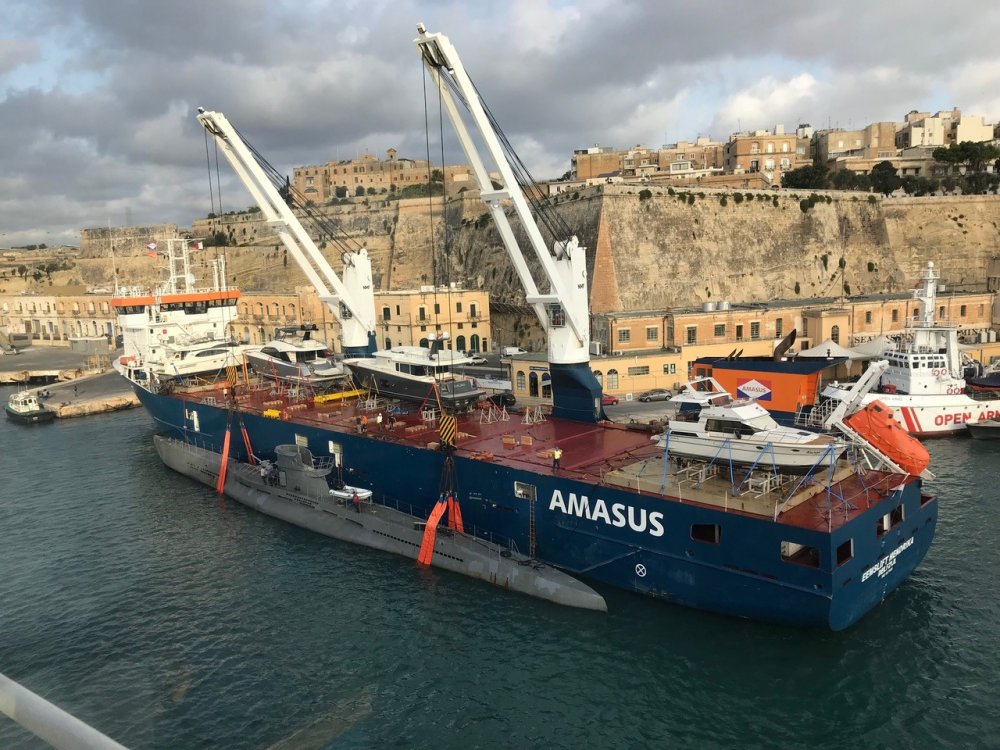
We wondered if Jan te Siepe would be interested in telling us more about Starclass Yacht Transport in light of the listing incident in Norway a few months ago. Jan kindly said yes, so here is what he has to say in his own words.
Has the recent incident with the listing of your transport vessel in Norway triggered any customer concerns regarding the safety of their assets or affected confidence in this method of transport?
We received only positive reactions as, of course, the carrier was in jeopardy, but the yachts all remained on board, except for a big fishing boat of 280 tonnes, but that was safely towed into port with some damage but nothing major.

Do you have a message you would like to share with the breakbulk/ heavy lift shipping industry? Anything you would like to clear up?
The heavy lift industry and also yacht transport is a very specialised business, and I see too much interference by so-called “specialists” that are flown in from shore. Normally the crew of a heavy lift vessel together with the backup of the office are very capable and do not need all this “support”.
How busy is it at this time of year?
We do not really have a high or low season and we do not move yachts around the globe. We operate one liner service for yachts (on deck and under deck) between the Baltic to Turkey and back with around 10 ports en route.
What kind of vessels do you transport?
We move yachts from 15 to 300 tonnes of weight. Sometimes new from the shipyard to the client, sometimes second-hand bought by a new owner, and an increasing amount of commercial vessels (tugboats, fishing vessels, and passenger ferries).

Do you own your own transport vessels or do you charter vessels?
We always use the same two to three carriers which we charter long term. We use “Deo Volente” 2 x 120 tonnes, “Eemslift Hendrika” 1 x 150 and 1 x 180 tonnes, and “Eemslift Nellie” 2 x 150 tonnes. These vessels are converted into yacht carriers, extended decks, flat hatch covers, certified adjustable cradling system designed by ourselves which is RINA certified and we have a special lashing system. On board our yacht carriers we do not weld anything, as welding and grinding will damage the yachts.
How do you ensure the boats are safely and securely sea fastened for transit? How do you protect the cargo? Do you hire a third party for this?
Because we always use the same vessels and those vessels always have returning crews, and the crew and officers get training from our (3) loadmasters, we only have specialists on board (trained by ourselves). This is a unique situation, as all other companies use normal general cargo vessels with some main cargo in the hold and yachts on deck. So they do not have a specialised crew, and the vessel is not adapted to yacht transport, so this often results in high stability due to the main cargo in the hold.
High stability is killing for yachts as yachts are not capable to resist the forces of fast rolling. Our vessels do not have heavy cargo in the hold and sail around with a safe but minimum stability and rolling time is therefore very long and comfortable for the yachts.
What are the main challenges or concerns with transporting these types of cargo?
Every boat we transport is different, and a yacht does not have bollards with a certified SWL. Also, the age of the boat is important as the strength of an older yacht can be much less than a new yacht. Then there is a difference in quality, materials, and maintenance. So the lashing and securing of each yacht is always a new adventure.
Are there any emerging markets in yacht transport?
I only know that since we started as the first company in yacht transport (in1987) we created a market which was not there before. In the beginning, a boat show was always local, as there was no way to get an English yacht to an Italian boat show, or Far East built boats to a London Boat show. So because of yacht transport, national shows became international boat shows.
Is grouping yachts and transporting them together better for the environment than individually sailing the vessels to their destination?
A pleasure yacht will not sail on its own keel across Europe or other long distances, as a yacht is not made for it (not seaworthy), the owner has no idea how to do it as he is not a professional. (He might be a successful entrepreneur, but that does not make him a Captain). And he also will not have the time. So therefore shipping is the only real solution if you decide to use your yacht away from home. And sailing (by a professional crew) is often more expensive than shipping. For sailboats the matter is different, and therefore 90% of our clients own a motorboat.
Starclass does not group boats. We maintain a sailing schedule. So no disappointments and waiting for a carrier that does not come. (we receive many horror stories about this subject from disappointed clients that booked, paid, and were never shipped.)

The last word…
We started as the first yacht transport company with our cargo vessel “Waddenzee”, on which I was Captain. We only do yachts, and except for the Yachtexpress (the float-in carrier) there are still to this day no other specialised yacht transport companies, only shipowners that sell their deck space for yacht transport or yacht transport companies that charter normal breakbulk carriers. Therefore I can say that the yacht transport market has still not grown up. It is like carrying containers with a bulk vessel. Starclass is the only really specialised yacht transport company, and therefore our yachts remain on board even when the carrier is in danger of capsizing.

Comments are closed.